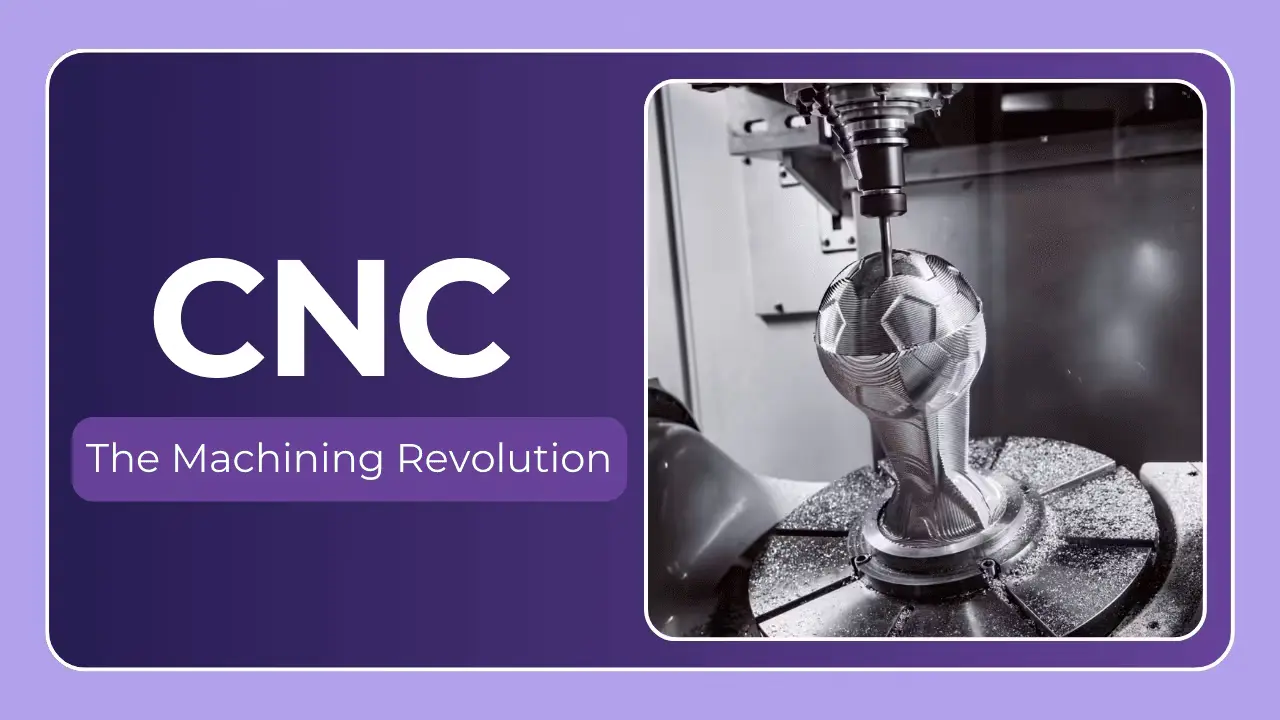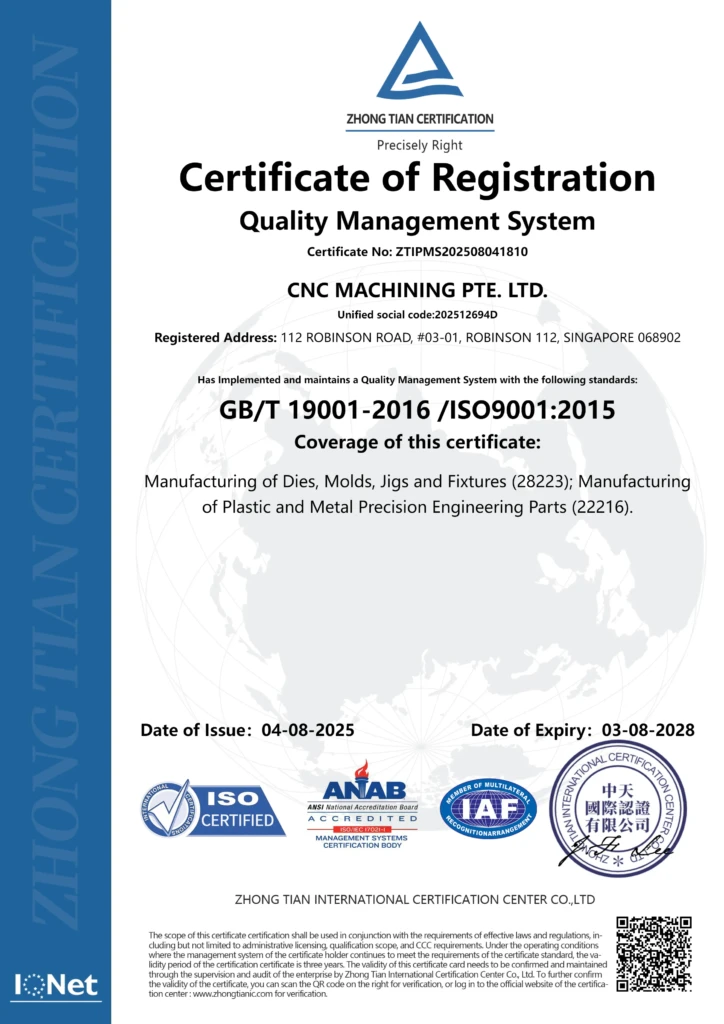The aerospace industry demands nothing short of perfection. Every component, from engine turbine blades to fuselage panels, must adhere to incredibly strict tolerances, material specifications, and performance standards. Failure is simply not an option. In this high-stakes environment, CNC Machining for Aerospace Parts has emerged as an indispensable manufacturing process, enabling the creation of complex, high-precision parts that can withstand the rigors of flight.
Why CNC? The answer lies in its unparalleled accuracy, repeatability, and efficiency. Unlike traditional machining methods, CNC (Computer Numerical Control) uses computer-programmed instructions to guide cutting tools, ensuring that each part is manufactured to the exact specifications. This is particularly crucial for aerospace applications where even the slightest deviation can compromise performance and safety.
The Advantages of CNC Machining in Aerospace:
-
- Exceptional Precision and Accuracy: CNC machining achieves tolerances measured in microns, ensuring that aerospace components meet the stringent requirements of the industry. This level of accuracy is critical for parts like engine components, landing gear parts, and control surfaces, where precise fit and function are paramount.
-
- Complex Geometries: Aerospace parts often feature intricate designs and complex geometries that are difficult, if not impossible, to produce using conventional methods. CNC machining effortlessly handles these complexities, allowing for the creation of optimized, lightweight components with enhanced performance characteristics. 5-axis CNC machining, like that offered by CNC MACHINING PTE. LTD, further extends these capabilities, enabling even more complex cuts and features in a single setup.
Picture showcasing complex aerospace parts manufactured by 5-axis CNC machining. Include captions mentioning the geometric complexity achieved and tight tolerances held.
- Complex Geometries: Aerospace parts often feature intricate designs and complex geometries that are difficult, if not impossible, to produce using conventional methods. CNC machining effortlessly handles these complexities, allowing for the creation of optimized, lightweight components with enhanced performance characteristics. 5-axis CNC machining, like that offered by CNC MACHINING PTE. LTD, further extends these capabilities, enabling even more complex cuts and features in a single setup.
-
- Material Versatility: Aerospace components are manufactured from a wide array of materials, including aluminum alloys, titanium alloys, nickel-based superalloys (Inconel, Hastelloy), and composite materials. CNC machining can handle these diverse materials with precision and efficiency, allowing for the creation of components optimized for specific performance requirements. CNC MACHINING PTE. LTD specializes in processing most materials, providing designers and engineers with the freedom to select the best material for their application.
-
- Repeatability and Scalability: Once a CNC program is created and validated, it can be used to produce hundreds or thousands of identical parts with consistent accuracy. This repeatability is essential for mass production in the aerospace industry, ensuring that each component meets the same high standards. This scalability also allows aerospace manufacturers to easily adjust production volumes to meet changing demand.
-
- Reduced Material Waste: CNC machining is a subtractive manufacturing process, meaning that material is removed to create the desired shape. Modern CNC machines are equipped with sophisticated toolpath optimization algorithms that minimize material waste, reducing manufacturing costs and promoting sustainability.
-
- Rapid Prototyping and Design Iteration: CNC machining is well-suited for rapid prototyping, allowing aerospace engineers to quickly iterate on designs and test different configurations. This accelerates the development process, enabling manufacturers to bring new products to market faster. CNC MACHINING PTE. LTD offers quick turnaround times for custom precision machining, shortening the prototyping cycle significantly.
Key Applications of CNC Machining in Aerospace:
CNC machining plays a critical role in the manufacturing of a wide variety of aerospace components, including:
-
- Engine Components: Turbine blades, compressor discs, fuel nozzles, and other critical engine parts are manufactured using CNC machining to ensure precise fit, efficient performance, and reliable operation under extreme conditions.
-
- Structural Components: Fuselage frames, wing spars, and other structural components are often CNC machined from high-strength alloys to meet stringent weight and strength requirements.
-
- Landing Gear Parts: Struts, axles, and other landing gear components are manufactured using CNC machining to provide the necessary strength and durability for safe landings.
-
- Control Surfaces: Ailerons, elevators, and rudders are often CNC machined to precise aerodynamic profiles, ensuring optimal control and maneuverability.
-
- Avionics Enclosures: CNC machining creates the precise, durable enclosures needed to protect sensitive electronic equipment in aircraft, ensuring reliable avionics performance.
The Future of CNC Machining in Aerospace:
The future of CNC machining in aerospace is bright, with ongoing advancements in machine technology, tooling, and software continuously pushing the boundaries of what is possible. Emerging trends include:
-
- Increased Automation: Integration of robotic systems and automated material handling will further improve efficiency and reduce labor costs.
-
- Artificial Intelligence (AI) and Machine Learning (ML): AI and ML algorithms will be used to optimize CNC programs, predict tool wear, and improve machining accuracy.
-
- Advanced Materials: CNC machining will play a critical role in the manufacturing of components from advanced materials such as ceramic matrix composites (CMCs) and additive manufacturing (3D printing) hybrid parts.
-
- Digital Twins: The creation of digital twins of CNC machines and parts will enable real-time monitoring, predictive maintenance, and improved process control.
Choosing the Right CNC Machining Partner:
Selecting a CNC machining partner capable of consistently delivering high-quality, precision aerospace components is crucial for success. Key factors to consider include:
-
- Experience and Expertise: Look for a company with a proven track record in the aerospace industry and a deep understanding of the unique challenges and requirements of aerospace manufacturing.
-
- Advanced Equipment and Capabilities: Ensure that the company has state-of-the-art CNC machines and tooling, including 5-axis capabilities, as well as the expertise to program and operate them effectively.
-
- Quality Control Systems: Verify that the company has robust quality control systems in place to ensure that all parts meet the required specifications and standards.
-
- Material Expertise: Choose a partner experienced in machining the specific materials required for your application and capable of providing material certifications.
-
- CNC MACHINING PTE. LTD, with its advanced five-axis CNC machining equipment, production technology, and comprehensive post-processing services, is well-positioned to meet the demanding requirements of the aerospace industry. They offer customized solutions for metal parts manufacturing and rapid prototyping, alongside precision and efficiency.
Conclusion
CNC machining has revolutionized the aerospace industry, enabling the creation of complex, high-precision components that are essential for safe and efficient flight. As technology continues to evolve, the role of CNC machining in aerospace will only become more critical. By partnering with a qualified and experienced CNC machining provider like CNC MACHINING PTE. LTD, aerospace manufacturers can unlock the full potential of this transformative technology and achieve new levels of performance, quality, and reliability. When precision is paramount and failure is not an option, CNC machining stands as the cornerstone of aerospace manufacturing.




